1 Provenience. The 527-piece Straschnaya assemblage makes up 6.0% of our 8813-piece grand total. Most are probably from the Pleistocene horizons, although we are not absolutely certain because of inadequate specimen labeling.
2 Species. The two most common groups in the 527 pieces are: indeterminable (91.1%) and big mammal (6.4%) (Table A1.2, site 24). There is a lot of marmot bone in Straschnaya, but we recorded only the pieces that seemed that they might have been carried in, i. e., those having tiny, fox-sized tooth dints. Ovodov feels that marmots burrowed in the cave, and some died naturally in their burrows, leaving clusters of undamaged bones in largely articulated conditions. The more common groups in the pooled assemblage averages that Straschnaya is lacking or has very low frequencies of include: bear, bison, gazelle, goat-sheep, horse, hyena, mammoth, reindeer, and roe deer.
3 Skeletal elements. The most common groups represented in the 527 pieces include: unknown (49.7%), long bone (31.7%), rib (5.3%), and metapodial (4.2%) (Table A1.3, site 24). Compared with the pooled assemblage, Straschnaya has no or fewer pieces of mandible, vertebra, scapula, humerus, radius, femur, foot, and toe; and more long bone and unknown pieces.
4 Age. There is almost no (0.6%) sub-adult representation in the 527 Straschnaya pieces (Table A1.4, site 24). This is much less than the pooled assemblage average.
5 Completeness. Straschnaya is a very incomplete assemblage as assessed by this “missing end” variable. Of the 527 pieces there is only 0.9% whole, 8.0% one anatomical end, and 91.1% with no anatomical ends (Table A1.5, site 24). Compared with the pooled assemblage, Straschnaya is much less complete. Presumably this reflects its having had hyena and/or other carnivore occupants.
6 Maximum size. This variable correlates with completeness. The mean for the 527 Straschnaya pieces is 5.4 cm, the range is 2.5 cm to 16.2 cm (Table A1.6, site 24). These values are about half those of the pooled assemblage. Regardless of what species are represented in the Straschnaya assemblage, its upper range limit is smaller than most of the long bone lengths provided by Vera Gromova (1950: table 27), with the exception of fox.
7 Damage shape. The most common forms of damage to the 537 Straschnaya pieces are: long bone flake (71.8%), long bone splinter (17.6%), and irregular (4.2%) (Table A1.7, site 24). Compared with the pooled assemblage averages, Straschnaya has more long bone flakes, splinters, and irregular bones; and fewer long bone fragments, phalanx butts, medial ribs, undamaged, and mostly whole bones.
8 Color. All 527 Straschnaya pieces are ivory colored (Table A1.8, site 24). This frequency is greater than the pooled assemblage average.
9 Preservation. Only 3.2% of the 527 Straschnaya pieces are chalky. The rest are ivory hard (Table A1.9, site 24). Compared with the pooled assemblage, Straschnaya has almost six times fewer chalky pieces. Information on the amount of time sunlight fell directly into the cave would be useful here, but the low frequency of chalky bone suggests that old ground surface carcasses were not often carried into the cave by scavengers.
10 Perimortem breakage. Almost all (98.1%) of the 526 Straschnaya pieces have perimortem breakage (Table A1.10, site 24). This frequency is more than the pooled assemblage average.
11 Postmortem breakage. The amount of postmortem breakage in the 527 Straschnaya pieces is 11.4% (Table A1.11, site 24). This amount is somewhat less that the pooled assemblage average. Given the nature of our perimortem damage “universe,” we do not see that it indicates any meaningful condition.
12 End-hollowing. There is almost no (0.9%) end-hollowing in the 527 pieces (Table A1.12, site 24). Much more end-hollowing occurs in the pooled assemblage average. Here, there is good reason to be curious about the difference, and it is surely due to the low frequency of “whole” bones. The lesson to be learned here is that a multi-variable study may have more highly correlated variables than expected.
13 Notching. About 10% (11.4%) ofthe 527 Straschnaya pieces exhibits 1-7 notches. One notch is the most frequent number per piece (7.8%) (Table A1.13, site 24). Compared with the pooled assemblage average, Straschnaya has slightly fewer notched pieces.
14 Tooth scratches. Tooth scratches are fairly frequent (22.9%) in the 526 Straschnaya pieces. The number of scratches per piece ranges fTom one to more than seven (Table A1.14, site 24). Compared with the pooled assemblage average, Straschnaya has about the same frequency of tooth scratching.
15 Tooth dints. The frequency of dinted pieces in the 526 Straschnaya pieces is 31.9%. The number of dints per piece ranges from one to more than seven. One dint is the most common number (9.1%) of dints per piece (Table A1.15, site 24). Compared with the pooled assemblage average, Straschnaya has slightly more dinted pieces. We feel these values are supportive of a significant carnivore presence, and whatever bioturbation it implies relative to human use of this cave.
16 Pseudo-cuts. There are six pieces with pseudo-cuts in the 526-piece Straschnaya assemblage. In this 1.1% occurrence, the number of pseudo-cuts per piece ranges from one to a piece that has 22 pseudo-cuts (Table A1.16, site 24). Compared with the pooled assemblage average, Straschnaya has less pseudocutting. Nevertheless, Straschnaya has all of the perimortem features we associate with carnivores, and as will be seen, there is also a considerable number of pieces with acid erosion. Taken altogether, the perimortem taphonomy suggests that the cave was more likely a hyena den than a continually used human shelter.
17 Abrasions. Out of 526 Straschnaya pieces, there is only one (0.2%) with abrasions. This single piece has four striations (Table A1.17, site 24). Compared with the pooled assemblage average, abrasions are also rare in the Straschnaya assemblage.
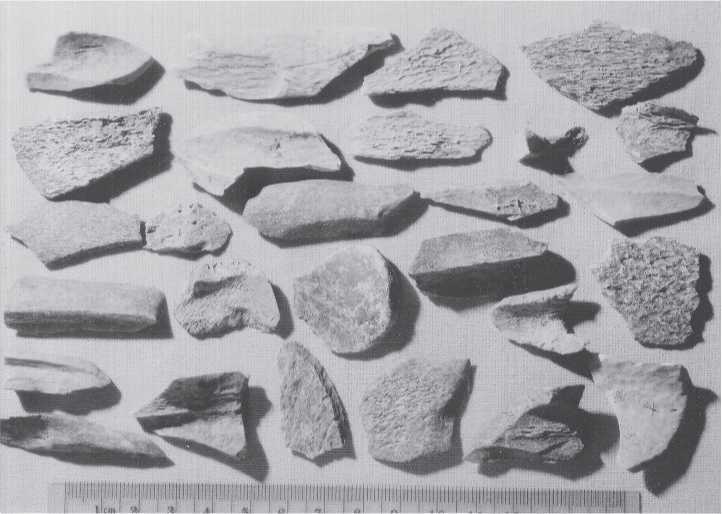
Fig. 3.143 Straschnaya Cave, stomach bones. A 1988 sample of this type of bone damage. Scale is in centimeters (CGT neg. IAE 7-11-01:2).
18 Polishing. Of the Straschnaya pieces, 511 could be scored for polishing, which is 69.7%. By location, polishing occurs at: one end 5.7%, middle 1.0%, and end-middle 63.0% (Table A1.18, site 24). The total amount of polishing in the pooled assemblage is similar to the Straschnaya condition, although the locational amounts are different. Without question, carnivores used this cave.
19 Embedded fragments. Embedding is rare (0.4%; 2 / 527) in the Straschnaya assemblage. One piece has one embedded fragment, the other has four (Table A1.19, site 24). Compared with the pooled assemblage average, Straschnaya has much less.
20 Tooth wear. Only one tooth was available for scoring wear, but was not because it had been swallowed and had acid erosion. It was classified as a stomach bone.
21 Acid erosion (Figs. 3.143-3.145). Out of 528 Straschnaya pieces, more than one-quarter (28.3%) have acid erosion (Table A1.21, site 24). This frequency is more than the Razboinich’ya (7.3%) and Dvuglaska (22.1%) hyena caves, but less than Maly Yaloman (48.0%). Hyenas were most likely the principal occupants of Straschnaya Cave.
22-24 Rodent gnawing, insect damage, and human bone. There are no examples of these variables.
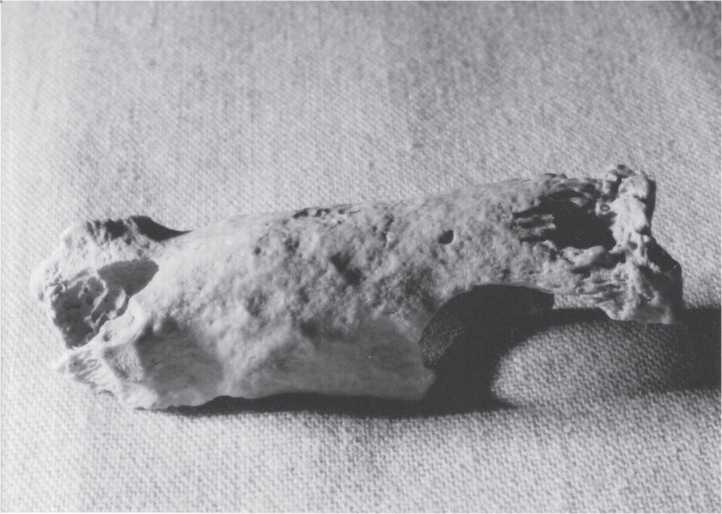
Fig. 3.144 Straschnaya Cave, stomach bone. Avery large eroded toe bone 7.2 cm in length (CGT neg. lAE 7-5-02:6).
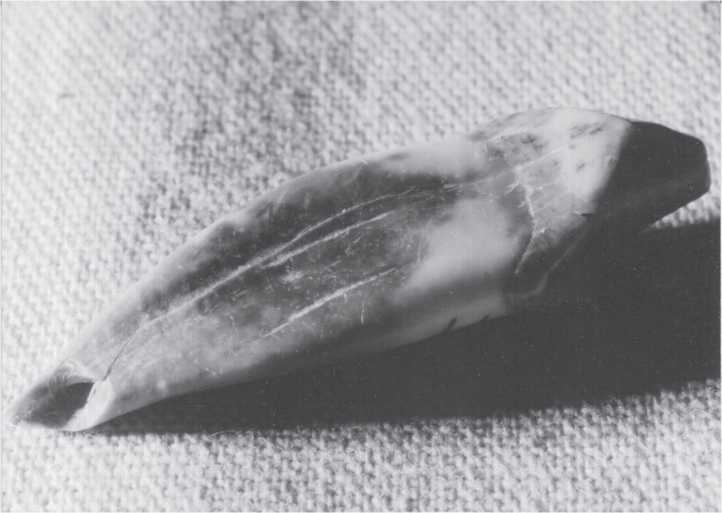
Fig. 3.145 Straschnaya Cave, tooth. A mature hyena incisor with tooth scratches and polished root tip. Cannibalism. Actual width of image is 3.3 cm (CGT neg. IAE 7-5-02:17).
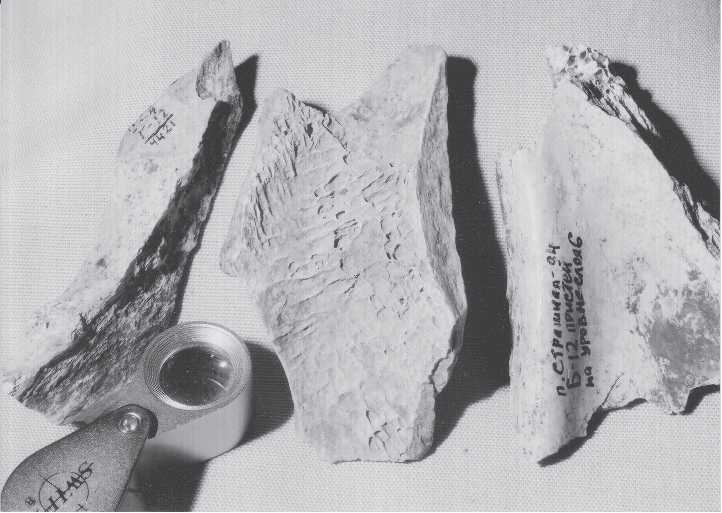
Fig. 3.146 Straschnaya Cave bone damage. Large bone flakes produced by carnivores, presumably hyenas. Center long bone fragment is 9.0 cm in length (CGT neg. IAE 7-5-02:20).
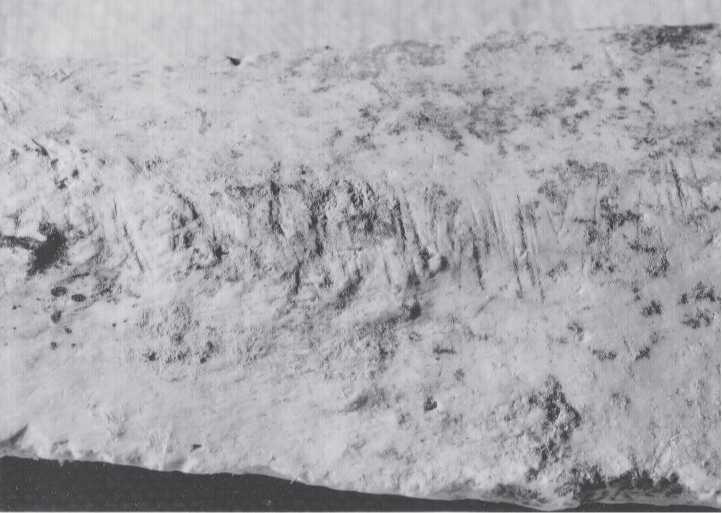
Fig. 3.147 Straschnaya Cave (1988) pseudo-cuts. Because of the rounded edges of the “cuts,” plus other
Unquestionable carnivore damage to this specimen, the numerous fine parallel striations were judged to be pseudo-cuts. This specimen is an excellent example of the need of a class of damage that allows for uncertainty of identification. Actual width of image is 3.3 cm (CGT neg. IAE 7-11-01:7).
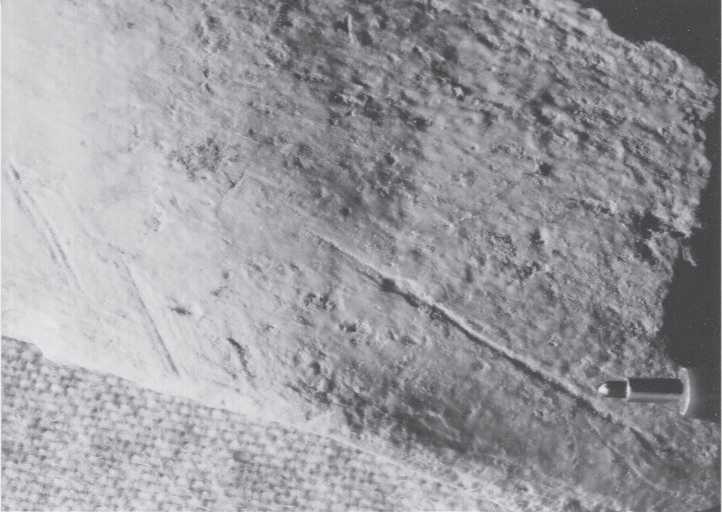
Fig. 3.148 Straschnaya Cave, cuts and pseudo-cuts. This odd piece has both stone tool cut marks (lower left) and a pseudo-cut mark (lower right at pencil point). There also appears to be some surface erosion, suggesting that the piece had been swallowed but regurgitated some time afterward. Actual width of image is 3.3 cm (CGT neg. IAE 7-16-01:17).
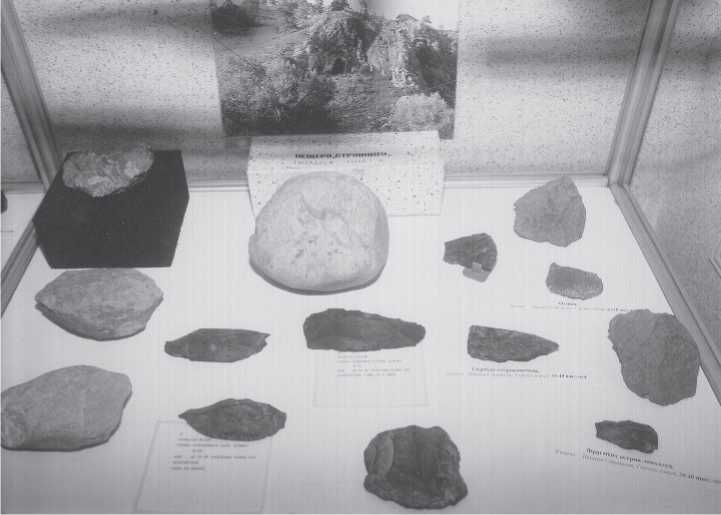
Fig. 3.149 Straschnaya Cave, stone artifacts. Exhibit of stone objects found in the cave. The text indicates that there is a flake, a pointed screblo, a fragment of a Levallois point, and unidentified specimens. The variability in quality of these artifacts may explain some of the difficulty in identifying some cut marks. Exhibit photograph shows entrance to cave (CGT color IAE 8-5-02:31).
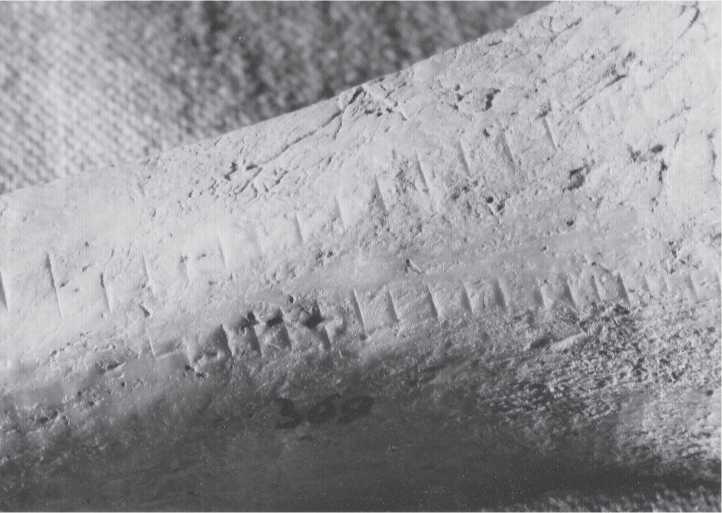
Fig. 3.150 Straschnaya Cave, “symbolism.” This bone fragment, numbered 369, was found in the paleontological collection, seemingly missed in the field or lab sorting of cultural and non-cultural remains. The equally spaced cut marks were probably made as a decorative activity, although a calendrical purpose might alternatively be inferred. The bone fragment is 7.2 cm in length. There are >25 parallel cut marks (CGT neg. IAE 7-5-02:1A).
25 Cut marks. Only four Straschnaya pieces out of 527 have cut marks, a frequency of 0.8%. One, three, six, and more than seven are the number of cuts per piece (Table A1.25, site 24). Compared with the pooled assemblage average, cutting is very rare in the Straschnaya assemblage, approaching the total absence of the Razboinich’ya and Dvuglaska hyena caves.
26 Chop marks. Out of 527 Straschnaya pieces, only one has been chopped (0.2%). This piece bears only one chop mark (Table A1.26, site 24). Compared with the pooled assemblage average, chopping is extremely rare in the Straschnaya assemblage. Such rarity opens up the possibility of our misidentification.




 World History
World History









